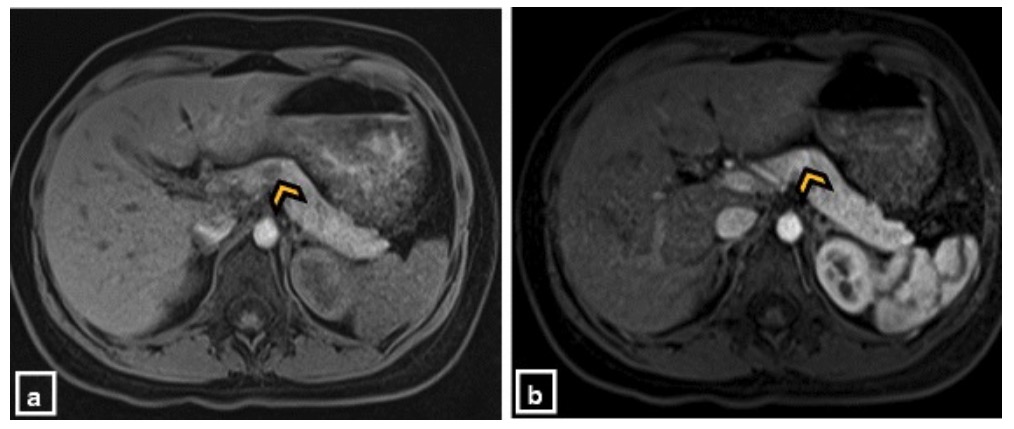Playlist
Show Playlist
Hide Playlist
Hypoglycemia with Case
-
Slides 02-03 Diabetes Mellitus part 2.pdf
-
Reference List Endocrinology.pdf
-
Reference List Diabetes Mellitus.pdf
-
Download Lecture Overview
00:00 Let's go on to another case. A 74-year-old woman comes to the emergency department with confusion. 00:07 One of her grandchildren recently had a gastrointestinal infection. The patient developed anorexia 3 days ago and vomiting 2 days ago. She has been unable to tolerate any liquid or solid food for the last 24 hours. Medical history is significant for type 2 diabetes, hypertension, hyperlipidemia, and hypothyroidism. Medications include aspirin, lisinopril, glimepiride, levothyroxine, and atorvastatin. Her last dose of medication was 48 hours ago. On physical exam, her temperature is 37.5°C, blood pressure 115/65, pulse rate 95 beats/minute. She is arousable but confused. 00:51 Her mucous membranes are dry. She has mild tenderness to palpation throughout the abdomen. There are no focal or neurologic deficits. Lab studies are pending. What is the most likely diagnosis? This patient most likely has a diagnosis of hypoglycemia. This hypoglycemia is due to the presence of glimepiride which has a long half-life in association with her fasting and volume loss induced by her recent gastrointestinal infection. Hypoglycemia in patients with diabetes is a common complication of intensive therapeutic regimens in patients with diabetes. Avoidance of hypoglycemia prior to focusing on a patient's hemoglobin A1c goal is of the outmost importance because of the significant morbidity and mortality associated with low plasma glucose levels. The American Diabetes Association Standard for Medical Care refer to serious clinically significant hypoglycemia as a glucose level of less than 54 mg/dL whereas the glucose alert value is defined as less than 70 mg/dL. Insulin ceases when the glucose level falls below 80 mg/dL. Hypoadrenergic symptoms begin to alert the patient to hypoglycemia. These include tachycardia, sweating, tremor, hunger, and anxiety. Typically, the body responds to hypoglycemia by secreting glucagon, epinephrine, norepinephrine, cortisol, and growth hormone. Progression is based on the escalating degree of hypoglycemia. As hypoglycemia worsens, the cognitive function begins to decline. This can lead to a loss of consciousness, seizures, and even death. The treatment of hypoglycemia involves the immediate correction of blood glucose. If the patient is conscious, 15-20 grams of glucose tablets or glucose gel should be provided. Check the blood glucose after 15 minutes. The consumption of 15-20 grams of glucose should occur again if the hypoglycemia does not improve to greater than 70 mg/dL. When oral consumption of glucose is not possible or safe, parenteral glucagon should be provided. To prevent future events, a meal or snack after glucose has been corrected should be used to avoid continued hypoglycemia as under the underlying course may still be present. In the particular case, the long half-life of the glimepiride may persist for many hours after the patient has left the emergency room. Consequently, alerting the patient to the symptoms of hypoglycemia will be important and encouraging her to take snacks until the drug has left her system. The long-term management of hypoglycemia involves relaxing glycemic target goals especially for hemoglobin A1c in diabetics. Reducing the doses of therapeutic agents may be needed and review of the patient's diabetes self-management plan may also be helpful to identify recurring factors that lead to the presence of hypoglycemia.
About the Lecture
The lecture Hypoglycemia with Case by Michael Lazarus, MD is from the course Diabetes Mellitus. It contains the following chapters:
- Case: 74-year-old Woman with Altered Confusion
- Hypoglycemia
Included Quiz Questions
What is the most likely diagnosis in the following case? A 74-year-old woman presents to the emergency department for altered confusion. One of her grandchildren recently had gastrointestinal symptoms. The patient developed anorexia 3 days ago, vomiting 2 days ago, and has been unable to tolerate any food for the last 24 hours. Medical history: Type 2 DM, hypertension, hyperlipidemia, and hypothyroidism. Medications include aspirin, lisinopril, glimepiride, levothyroxine, and atorvastatin (the last dose was 48 hours ago). Physical examination: Temperature is 37.5°C (99.5°F), blood pressure is 115/65 mm Hg, and pulse is 95 beats/min. She is arousable but confused, her mucous membranes are dry, she has mild tenderness to palpation throughout the abdomen, and there are no focal neurologic deficits. Laboratory test results: Pending
- Hypoglycemia
- Hyperglycemia
- Diabetic ketoacidosis
- Hyperglycemic hyperosmolar state
- Hyponatremia
What are the classic symptoms of hypoglycemia?
- Tachycardia, sweating, and tremor
- Satiety and bradycardia
- Nausea and hypervigilance
- Paranoia, mydriasis, and tremor
- Diarrhea, polyuria, and GI upset
Customer reviews
5,0 of 5 stars
| 5 Stars |
|
5 |
| 4 Stars |
|
0 |
| 3 Stars |
|
0 |
| 2 Stars |
|
0 |
| 1 Star |
|
0 |




